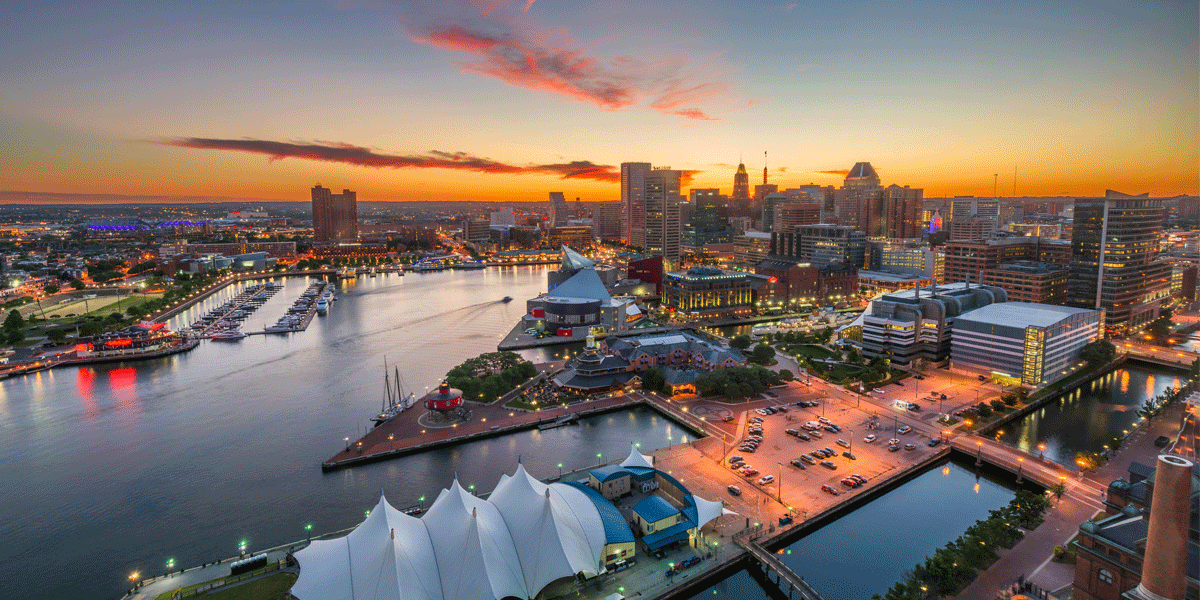Carl has been working for ATS International, in various capacities, for more than a decade. During this time, Carl's dedication to maintaining industry-leading service levels has helped customers move cargo around the world and back again... hundreds of times over. Today, as a customer service and sales manager, Carl enjoys the unique challenge that each international shipment presents as he works with his team to promote the ATS name on a global scale.
Do you frequent the Port of Baltimore? (Or maybe you did before the port was closed following the fall of the Francis Scott Key Bridge on March 26, 2024).
Crews have been working frantically to clear the 700-foot-wide channel of the remains of the Francis Scott Key Bridge in the waters of the Patapsco River. A limited-access channel (400-foot-wide, 50-foot-deep) has been available since May 21, but to restore traffic to normal, a little more heavy lifting is required.
As reported in The Baltimore Sun, experts expected the channel to be open in late May. That deadline has been missed. New estimates state the channel should be open no later than June 10.
What does this mean for you in the next few weeks as a truck driver?
At Anderson Trucking Service (ATS), our international division works with customers across the globe to ensure their cargo is shipped safely. Part of that means making sure our drivers are prepared when entering secure facilities like ports.
In this article, you’ll learn what you can expect at the Port of Baltimore in the coming weeks.
Entering the Port of Baltimore [Document Requirements]
Heading back to the port of Baltimore for the first time in a few months or never been there before? Don’t forget to bring the proper paperwork so you can actually enter the port.
If you’ve never been to the port of Baltimore, you must first make sure you’re registered with eModal and Trucker Check. If not, you won’t be able to enter the port.
You can register for eModal by visiting www.emodal.com and following the registration process. Once you receive a username and password, you’ll log into your account and follow the prompts to register with Trucker Check.
You also need an updated Transportation Worker Identification Credential (TWIC) card. A TWIC card, required by the Maritime Transportation Security Act, allows you access to secure maritime facilities and locations, like ports and vessels. With a TWIC card, you’ll have unescorted access to the Baltimore port.
If you don’t have a TWIC card, you can arrange for an escort from one of the port’s four approved escort companies. Before arriving at the port, you’ll need to schedule a time the escort can work with you. They charge anywhere from $75 to $100 per hour. With the port in a current state of congestion, you could be forced to wait a long time to load or unload. As a result, you may be left with a hefty bill from the escort company.
A TWIC card, on the other hand, costs $125.25 for new applicants and it’s good for five years. Getting a TWIC card is also a fairly easy process.
In addition to being registered with eModal and Trucker check and having a TWIC card or escort, you’ll need your delivery order or dock receipts. Without them, you won’t get past the guard shack.
If the cargo you’re picking up is being imported to the U.S., make sure you talk to your driver manager to ensure it’s customs released and line released (released by the ocean carrier).

Port Reopening Expectations: Traffic, Traffic, and More Traffic
For the first few weeks it’s fully reopened, expect a lot of congestion on the roads going into the Port of Baltimore and at the port in general. A lot of cargo has been sitting at the port since the bridge collapse. Cargo might be scattered everywhere.
At 50 feet, the Port of Baltimore is one of only two East Coast ports with such a deep channel depth. It’s one of the largest ports on the East Coast for roll-on/roll-off (Ro/Ro) freight and one of the biggest ports in the United States in general.
However, the Port of Baltimore can only accept so many vessels per day/month. A lot of vessels want to get back into the rotation, so you can expect the port to be busy in the coming weeks.
Not only that, but while the port was down, other ports like Norfolk and New York City took on the excess freight. Those ports don’t have the infrastructure or large equipment needed to service some Ro/Ro and breakbulk freight. This led to a lot of headaches for drivers and excess port demurrage as ships failed to discharge freight as scheduled.
As a result, some equipment from Baltimore was brought to those ports. At this time, some of that equipment may still be moving back to the Port of Baltimore as it opens up to all vessels — causing further delays.
While the port is playing catch up and all the cranes come back in rotation, you may incur additional fees to be paid out to you (like layover or detention) for excess wait time at the port.
Keep in mind that if you don’t have a crane appointment, it’s first come first serve to get loaded and unloaded.
Rates will probably stay the same, but more drivers may be in the area to haul the influx of freight. You may be able to get better backhauls. You won’t have to deadhead far away to find another load.
Baltimore Port Truck Driver Success Tips
If you have an appointment, meet it. Don’t be late. The port is expected to be a little chaotic in June as cargo that’s been at the port for months is picked up and vessels rush to get their freight there. As a result, you may wait hours to get loaded or unloaded.
Plan ahead and arrive at the port early so you don’t spend your day waiting. They start loading on both the Ro/Ro side and the container side at 7:30 a.m., so it’s a good idea to arrive between 6:30 a.m. and 7 a.m. to get in line.
There isn’t a truck stop near the port, so you’ll need to plan ahead in the days leading up to your pickup at the port. The night before your arrival, make sure you end your day early so you can get in your full 10-hour break before waking up early to get in line at the port.
Talk to your driver manager for advice on trip planning so you can make it on time.
It’s hard to estimate what the traffic congestion will look like, but it’ll probably be tough for the first couple of weeks in June. Prepare by padding your timeline to account for extra time spent in traffic going to and from the port. Remember to play it safe by taking it slow and increasing your following distance.

Navigate the Port with Ease
Navigating the reopening of the Port of Baltimore requires preparation and patience. Understanding the changes and setting expectations for the next few weeks will help you stay ahead.
Remember the following:
- Documentation is crucial: Ensure you're registered with eModal and Trucker Check, and have an updated TWIC card or an escort arrangement.
- Prepare for delays: With congestion and backlogged cargo, expect wait times and plan your schedule accordingly.
- Strategize your arrival: Arrive early to avoid long lines and talk to your driver manager for trip planning tips.
- Stay safe: With increased traffic, drive cautiously and allow for extra travel time.
At ATS, we're committed to supporting our drivers through these transitions. Stay informed, plan ahead, and you'll be ready to navigate the Port of Baltimore smoothly.
Be sure to subscribe to the Learning Center for more tips!

